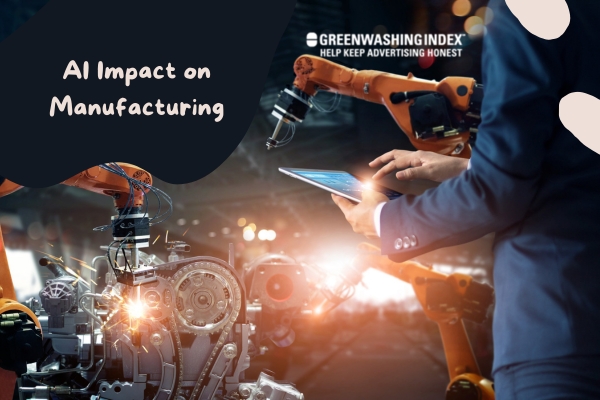When people hear about AI’s impact on manufacturing, they might think of cold, metal machines that have little to do with nature. But hold on! What if I told you these high-tech wonders are actually superheroes in the fight for a cleaner planet? Yes, robots and AI aren’t just about making stuff faster; they’re about making things better for Mother Earth.
What makes robots and AI so special for our planet’s future, you ask? Well, imagine having a super assistant who not only knows exactly when your machines need some TLC but also guides you on how to use less while making more.
This is no sci-fi story—it’s real life, it’s happening now, and it’s pretty amazing how smart use of technology is helping us take giant leaps toward sustainability in the industry.
Exploring the AI Impact on Manufacturing for Sustainability
When I think about the future of making things, it hits me how vital it is to do so without harming our planet. That’s where sustainable manufacturing shines a spotlight. It’s all about making stuff in a way that takes care of the environment and can keep going for many years without running out of resources or hurting our world.
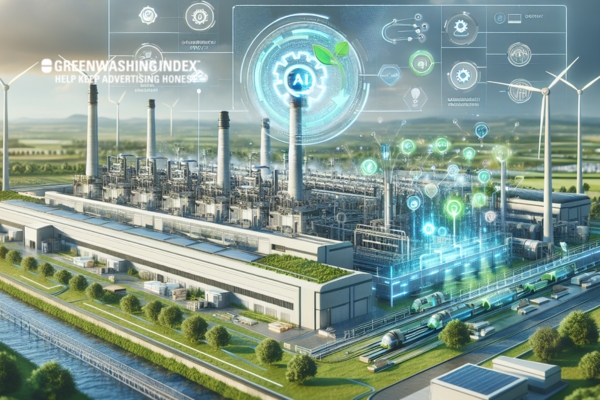
Defining Sustainable Manufacturing
So, what exactly is sustainable manufacturing? Well, it’s like baking a cake but thinking about every single ingredient and how they affect your health now and in the long run. In this case, though:
- The Ingredients: are materials we use to make products.
- Health: is our planet’s well-being or the environment.
Sustainable manufacturing asks questions like:
- Can we make this product using less water or energy?
- Is there a way to use materials that are safe for nature?
- After people use this product, can we recycle it instead of just throwing it away?
Those are big questions because they make sure that whatever factories produce, they don’t end up causing harm like polluted air or piles of trash that don’t go away for hundreds of years.
Why should we care? Simple:
- For Our Planet: Keeping Earth clean means animals, plants, and us humans can have a safe home.
- For Our Future: If we use up everything today like there’s no tomorrow, there might actually be no tomorrow—or at least not a very good one.
And now let’s look at two big helpers in sustainable manufacturing: Robotics and AI (Artificial Intelligence).
The Rise of Robotics and AI in Industrial Settings
Back in the day when my grandpa was working, most things were made by people’s hands—lots of hard work! Robots started changing all that when they first rolled into factories around the 1960s.
Timeline:
- 1960s: The first robots are simple machines—a bit clunky but revolutionary.
- 1980s onwards: Computers become smarter; robots get better at moving around and doing more than one thing.
- 2000s up to Now: Robots get eyes (sorta with cameras)and brains (thanks to Artificial Intelligence)that let them learn on their own!
But when AI steps into the picture—it’s game-changing time! Imagine teaching someone how to bake once then—boom—they bake cakes perfectly every time without asking again. That’s what AI does with robots; it helps them learn tasks faster and do them over and over without getting tired or making mistakes.
The rise of robotics and AI has been like watching black-and-white TVs turn into fancy smartphones—it changed how fast, well, and clever stuff gets made!
So there you have it—that’s why these tech wizards known as Robotics and AI are so darn important for keeping manufacturing sustainable: They do jobs better while helping look out for Mother Earth. Now isn’t that something worth chatting about at dinner tables?
Also Read: Metal Recycling: Your Guide to Sustainable Disposal
The Role of Robotics in Advancing Sustainable Manufacturing
As we look for ways to make factories more friendly to our planet, I think about how robots play a big part in this. They really help in making things without harming nature so much. This is called sustainable manufacturing.
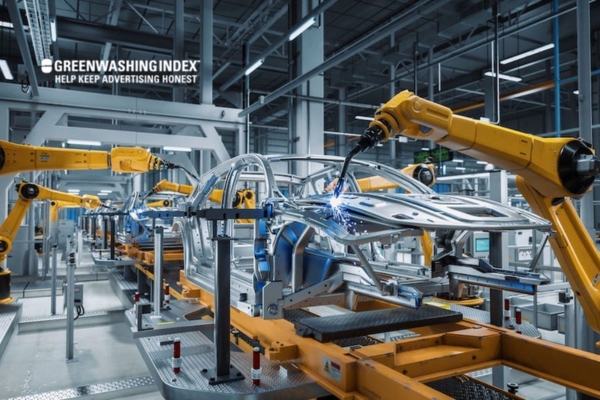
Decreasing Waste with Precision Automation
One of the best things robots do is they are very exact when they work. This means they make less mess and use materials better than we can sometimes. Let me tell you why this matters:
- Less Mistakes: Robots follow instructions perfectly. They don’t get tired or mix things up, so there’s less chance something will go wrong and waste materials.
- Consistent Quality: Since robots are precise, everything they make is exactly the same. We don’t have to throw away stuff that doesn’t look right.
- Better Planning: With robots, we can plan how to use each piece of material so there’s almost nothing left over.
- Reuse Scrap: Even when there is a little bit left over, some smart robots can figure out how to use those leftovers for something else.
This neat way of using materials means there’s less stuff that goes unused or thrown away, which is great for our Earth.
Energy Efficiency Meets Robotic Technology
Saving energy is another win with robotics in manufacturing. Here’s how these amazing machines are doing their part:
- Less Power on Standby: Robots only use energy when they are working on something. When they’re waiting or taking a break, they mostly turn themselves down low so they don’t waste power.
- Quick Moves: Also, because robots can move fast and do many things at once, jobs get done quicker than before which means less time spent running machines and using up electricity.
- Smart Systems: Many modern factories have systems where everything works together well – lights turn off when no one’s around and machines slow down if it’s not busy – this helps save lots more energy too.
By using power wisely like this, we cut down on electricity bills and help keep our air cleaner by not needing as much energy from power plants that might pollute.
So you see? Robotics doesn’t just mean cool tech; it’s a really important helper for making sure the future of making stuff keeps our planet safer and healthier!
Also Read: Egg Carton Recycling: A Path to Sustainable Lifestyle
How AI Innovations Drive Sustainable Practices in Manufacturing?
In the world of making things, there’s a big push to do it in ways that don’t hurt our planet. This is where robots and smart computers, or what we call AI, come into play. They can really change how factories work and make them much better for nature.
Predictive Maintenance to Reduce Downtime
One amazing thing that AI does in factories is called predictive maintenance. This is like having a super smart friend who tells you exactly when your machine will need fixing before it even breaks. Because of this, you don’t waste time or energy.
Think about this: When a machine breaks down out of the blue, it’s like canceling a big show at the last minute—everyone is upset and lots of resources are wasted. But if you know ahead of time when something might go wrong, you can fix it without all the drama.
Here’s how it happens:
- AI looks closely at each machine, using data from sensors that monitor things like temperature and vibration.
- It learns from all this information what normal looks like for each part of the machinery.
- Later on, if anything seems not normal—like too much shaking—it tells the workers “Hey, something might be about to break!”
This way, people can fix things during scheduled downtimes rather than having unexpected breaks in production. That means less waste of materials and energy—and that’s a plus point for our Earth!
Smart Resource Management Through Data Analytics
Now let’s chat about another cool way AI helps make better stuff without wasting resources: through data analytics. Data analytics is all about studying lots of information to make smart choices.
Here’s how smart resource management with AI works step by step:
- AI gathers huge amounts of data, such as how much water or electricity is used at every step in making something.
- Then it looks for patterns — maybe one process uses more power than it should.
- With those insights, AI gives ideas on how to use less water or electricity but still get great results.
So what does all this mean? It means not throwing away as much stuff and not using more power or water than needed – which both lead to helping out nature.
I’ve talked about just two ways robots and smart computers make manufacturing better for our planet: by predicting when machines need fixing before they break down (which saves energy) and by managing resources wisely (which also saves energy).
By using AI in these ways—keeping an eye on machines so they don’t stop working suddenly and analyzing heaps of numbers about resource use—factories become friends with nature instead of hurting it. And really that’s pretty incredible because as we look after our world today; we’re also making sure future we get to enjoy a healthy planet too!
Also Read: Laptop Recycling: The Ultimate Eco-Friendly Guide!
Real-World Examples Demonstrating the AI Impact on Manufacturing Sustainability
When I think about how robotics and AI are changing the game in sustainable manufacturing, there are a couple of real-world examples that come to mind. These examples show the power of these technologies in creating greener and more efficient factories.
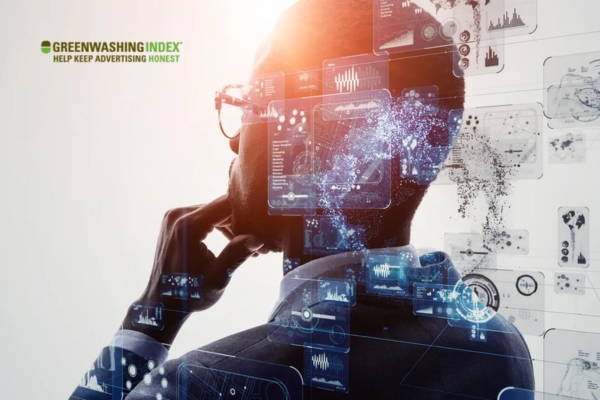
Case Studies Highlighting Successes
1. Automotive Industry – Electric Cars
One standout example is how robotics and AI have been used in making electric cars. A famous electric car company uses robots on its assembly lines to put together battery packs. These batteries are crucial for making eco-friendly cars that don’t use gas.
The use of robots helps the company make batteries faster than if people did it all by hand. Also, AI helps by checking that each battery is made right, without any mistakes. This means less waste and more perfect batteries for their electric cars.
2. Food Production – Smart Farming
Another case is in smart farming for food production where all sorts of data about crops, like how much water they need or when they should be picked, is collected by different sensors spread throughout a farm.
AI uses this information to help farmers make better decisions so they can grow more food without wasting resources, like water or fertilizer. This can also help reduce harmful impacts on land because it avoids over-farming or using too many chemicals that can hurt the environment.
3. Electronics Manufacturing – Energy Efficiency
In electronics manufacturing, there’s this factory that makes chips for computers and phones with the help of robots and AI systems. Here’s what makes it special:
- The tools driven by AI accurately control how much raw material gets used up.
- When there’s not enough work for some machines because orders might be low, these smart systems shut those machines down to save energy.
- Plus, they keep an eye out for any faults while making chips which cuts down on scrap parts – less throw-away means it’s good news for nature!
These examples show us how important both robotics and advanced software (AI) are in building a future where things get made without harming our planet as much as before.
They point out two big ways AI impacts manufacturing: One way is them helping us use less stuff – whether it’s materials or energy – because being wasteful isn’t good if we want to keep Earth green and healthy; the Second way is them spotting problems early so things don’t get made wrong only to end up as trash later.
By pulling together human skills with the smarts of machines like robots powered by brainy computer programs (AI), we find ourselves taking steps toward what’s known as sustainable manufacturing – creating goods without doing too much damage around us.
Addressing Concerns about Robotics, AI, and Job Markets
When we talk about robotics and AI’s impact on manufacturing, I think it’s important to look at how tech changes jobs. Lots of folks are worried that robots and smart machines will take over their work. This worry is not new. Think back to when factories first started using machines – many were scared then too.
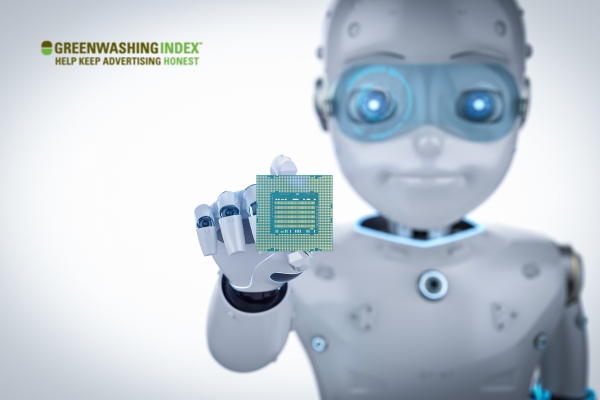
Let me break this down a bit:
- Job Displacement Worries: Machines doing human jobs is a big concern for many people. As robots and AI get better at tasks, some factory jobs that people used to do might not need them anymore.
- Changing Nature of Jobs: Yes, some jobs might go away because of technology. But what’s also true is new kinds of work pop up. These are often jobs we never thought about before. For example, people who fix these robots or make sure the AI systems are running right.
- Learning New Skills: With these changes means workers will need new skills. It’s kind of like updating your phone; workers update their abilities to stay ahead in the game.
- Better Job Quality: If machines take on tasks that can be tiresome or dangerous, people might have safer workplaces and do more interesting work instead.
Conclusion
It’s clear that AI’s impact on manufacturing is shaping a new era of sustainable production. Integrating robotics and AI in the industrial space echoes the promise of improved efficiency, reduced waste, and enhanced resource management – all central to eco-friendly practices.
However, this transformation also poses challenges, particularly in terms of workforce adaptation. Despite such hurdles, the move toward green manufacturing with robotics is not just an environmental imperative but an economic one too.
This shift towards more conscious production methods is paving the way for a future where industry and ecology do not just coexist but complement each other.

